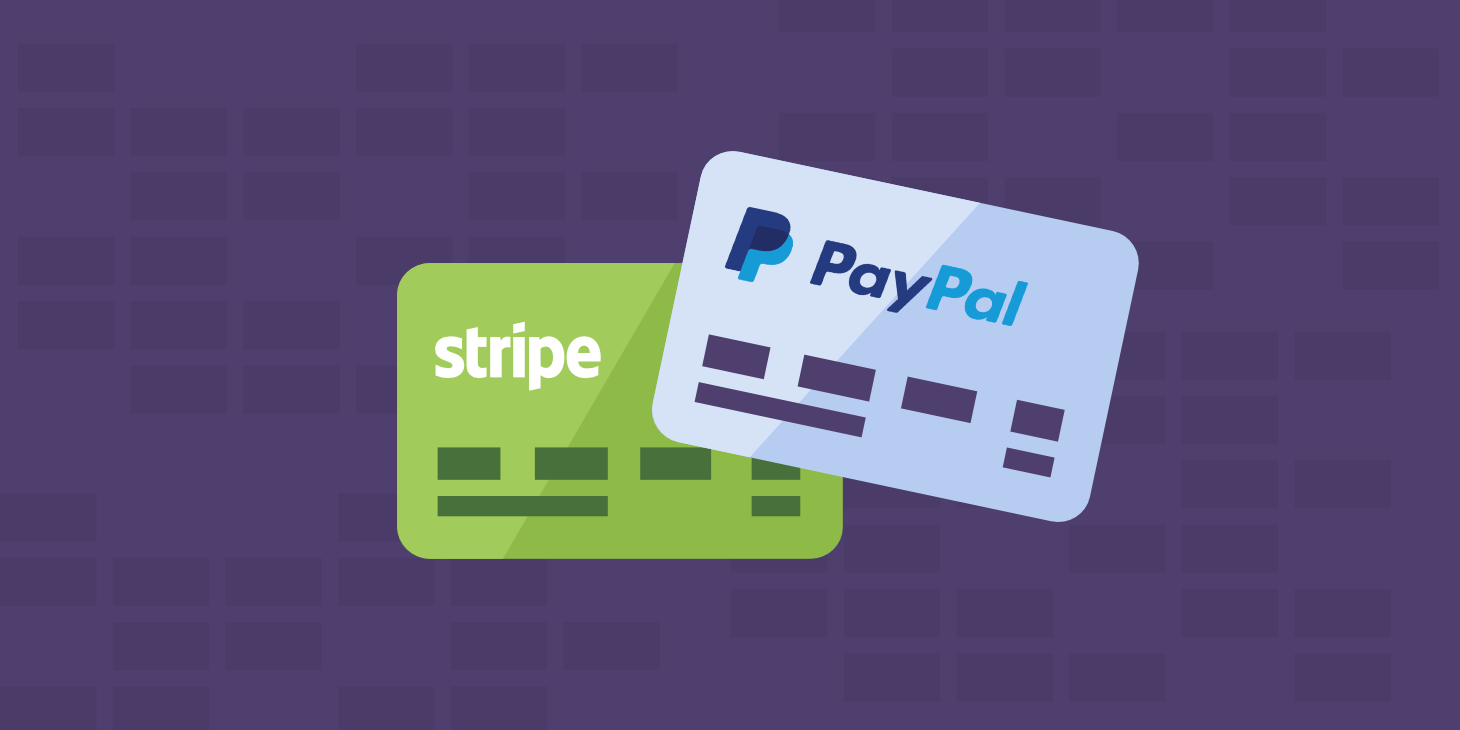Starting an ecommerce business is an exciting, chaotic time. You have so many things to consider: should you use a hosted platform or manage your store with a plugin? What are the strategies you need to skyrocket your sales?
But no question is more daunting than this one: How should you accept payments?
After you do your homework, there will be two pretty clear contenders for your merchant buck: Stripe and PayPal. Offering comparable features, choosing between the two feels like picking between apples… and yet more apples. Which is where this article comes in.
Today, we’re going to compare and contrast these two payment gateways and get down to the bottom of the Stripe vs. PayPal debate.

What Do Stripe and PayPal Do?
Both Stripe (founded 2011) and PayPal (founded 1998) are payment gateways, acting as the go-between for merchants and the appropriate credit card networks/financial institutions to authorize and accept payments.
The intricacies of these relationships can get pretty convoluted. A simple way to look at a payment gateway is as an envoy that routes information between merchants and banks.
Here’s a visual breakdown of where payment gateways fall into the web of ecommerce.

A payment gateway isn’t the only solution for accepting online payments, but it is one of the easier options to get started with.
Because unlike a payment processor, gateways give your financial data the armed guard it needs to travel between the credit card networks, your customer, and your store.
In other words, in most scenarios, it can help take the PCI compliance off your hands. And if you decide to go the gateway route, you’re going to come across Stripe and PayPal again and again. There are plenty of other payment gateways out there such as Authorize.Net, 2Checkout, Braintree (owned by PayPal), but Stripe and PayPal are by far two of the easiest ones to use.
For good reason, too: they have a longstanding stranglehold on the market. According to data from Datanyze, PayPal is used by 42% of the market. Stripe comes in second with around 19%. As of September 2018, Stripe is now valued at $20 billion! 😮 In 2020, Stripe revenue grew by 270% when compared to 2019, reaching $7.4 billion.

What Are Payment Gateways Used For?
First and most obviously, ecommerce stores use payment gateways. Under Armour is an example of a store that utilizes both Stripe and PayPal.
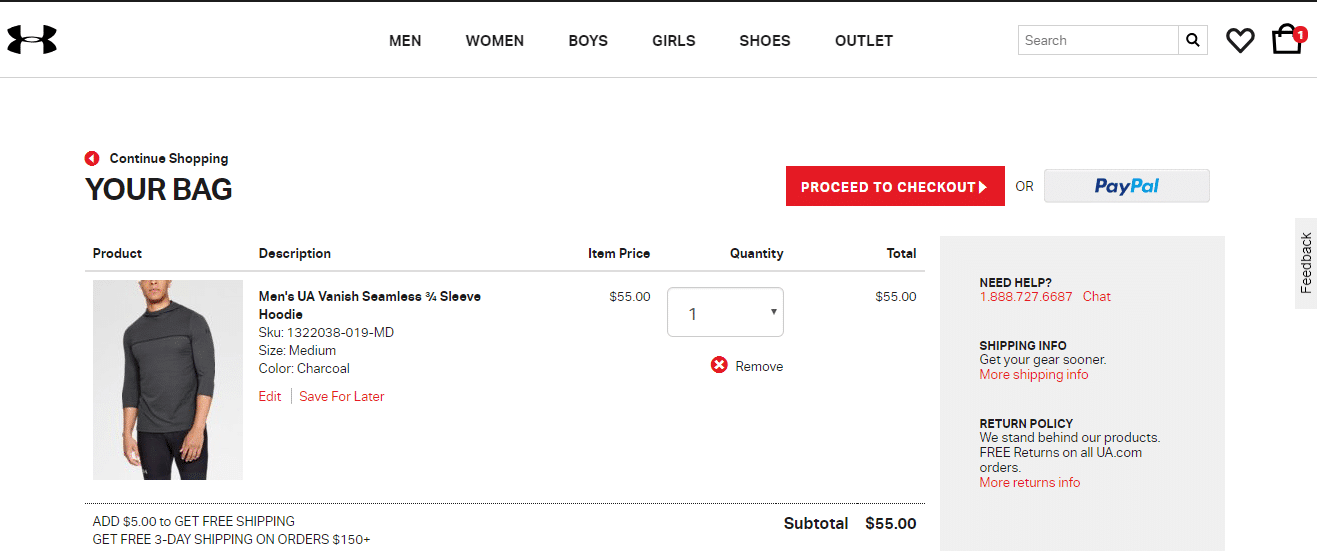
Perfmatters, a WordPress performance plugin is an example of a digitally downloadable product that accepts both payment gateways. They do this using integrations with the Easy Digital Downloads ecommerce plugin.
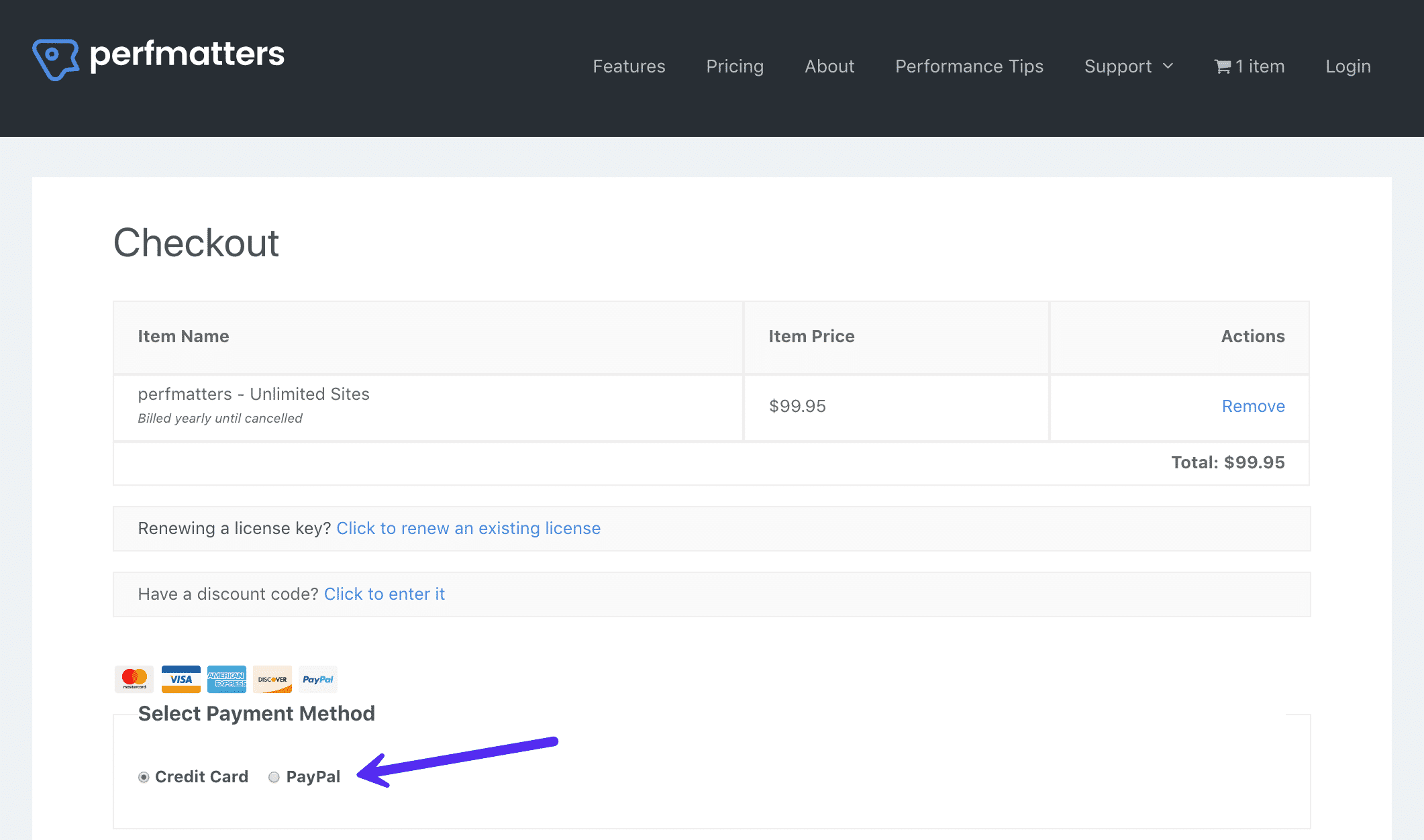
You can even use both payment gateways as a way to accept donations. UNICEF, a nonprofit organization does this on their website.

(Side note: Interested in accepting donations on your website like UNICEF? Check out our guides for how to set up donation buttons for Stripe and PayPal.)
Should You Use One Payment Gateway or Two?
All of the above begs the obvious question: If you can use both payment gateways, why do you have to choose at all?
Because unless you’re as big as Under Armour, UNICEF, or are tech savvy and have extra time to spare, you’re asking for extra headaches.
With two payment gateways come twice as many vendors, twice as many things to go wrong, and you’ll likely lose out on volume-based discounts from the respective gateways. If you have a custom back-end or other integrations, development around products or services you sell could turn this into a ridiculously complex task. Not good or very tenable for a small business.
However, with that being said. Sometimes having both payment gateways could be an advantage for your business. Especially in other countries. Not everyone has a credit card and a lot of consumers and bloggers use PayPal balances to pay for everything.
Running just one or two payment gateways very much depends on the industry, what you’re selling, and the type of customers you have.
Now, with that out of the way, let’s finally dive into our comparison Stripe vs PayPal.
Transaction Costs and Fees
On the micropayments side, PayPal is the clear victor, charging significantly less than Stripe per microtransaction. Micropayments are generally those under $10.
Paypal Micropayment Fees 🏆
- $1.00: 5% of $1 = 5¢ and 5¢ + 5¢ = 10¢
- $5.00: 5% of $5 = 25¢ and 25¢ +5¢ = 30¢
Stripe Micropayment Fees
- $1.00: 2.9% of $1 = 2.9¢ and 2.9¢ + 30¢ = 32.9¢
- $5.00: 2.9% of $5 = 14.5¢ and 14.5¢ +30¢ = 44.5¢
Standard Fees
But assuming that you’re interested in more than micropayments, the picture starts to get more complicated.
PayPal’s current fee is 2.9% + $0.30 per transaction.

Stripe’s fee schedule is also 2.9% + $0.30 per transaction.

As you can see, their transaction fees are dead even once you move above the “micro” level. But just how similar do their fees stay once you start getting into the fine print? That’s where it gets even trickier.
PayPal charges 4.4% for transactions where the funds originate from outside of the US:

Which means, even if the customer is now US-based but uses an international card, you’ll get hit with the same transaction fee.
Stripe is a little gentler in its fees here, charging a total of 3.9% in addition to its $0.30 fixed fee.

So, who emerges victorious in the battle of transaction fees? Unless you’re processing microtransactions on the regular, the answer is blissfully conclusive in this case.
Winner: Stripe 🏆
Now, let’s see how these two titans stack up when it comes to dispute and chargeback fees.
Dispute and Chargeback Fees
Chargebacks are painful for everyone involved. When a customer initiates a chargeback, you can anticipate more than payment in limbo — you’re also going to encounter additional fees.
PayPal’s chargebacks and associated fees include unauthorized transactions, item not received complaints, and complaints about items significantly deviating from the description.
When they initiate a chargeback, the amount gets refunded to the customer, and the credit card network tacks the merchant with up to a $20.00 fee. (Fortunately, this fee is refunded if they later rule the case in your favor.)
Stripe, on the other hand, takes a far more straight-cut approach and categorizes disputes simply as chargebacks in their documentation.
Disputes through Stripe also have a smaller, refundable $15.00 fee attached to their issuance. And, as a bonus, Stripe gives merchants the ability to prevent credit card fraud with their new and amazing Stripe Radar features. At Kinsta, we were able to prevent credit card fraud by 98%!
Winner: Stripe 🏆
If you haven’t tried Stripe’s new Radar features, we highly encourage you to do so.
But will they keep this win streak up when it comes to availability and supported currencies?
Refund Fees
PayPal used to be the winner in the refund category as they would return your original processing fee. However, as of October 11, 2019, this will no longer be the case.
You can find this in PayPal’s policy.
If you refund (partially or fully) a transaction to a buyer or a donation to a donor, there are no fees to make the refund, but the fees you originally paid as the seller will not be returned to you.
Stripe already has this in their policy.
There are no fees to refund a charge, but the fees from the original charge are not returned.
Winner: Neither
Global Availability and Supported Currencies
Now it’s time to take a look at where Stripe and PayPal are supported, along with currencies.
PayPal is currently available in over 200 countries/regions (Africa, Americas, Asia Pacific, and Europe) and supports 25 currencies – though some countries may have have access to all PayPal tools and features. PayPal makes it really easy no matter where your business is registered to open an account and start accepting payments right away.
Stripe, on the other hand, is only available in 26 countries. This alone could be a deal breaker for some businesses. However, Stripe does provide a workaround. No matter what country you’re based in, you can use Atlas to easily incorporate a U.S. company, set up a U.S. bank account, and start accepting payments with Stripe.
Where Stripe beats PayPal is currency support. Stripe supports over 135 different currencies.
We have to give the slight edge to PayPal here as countries supported is going to be more important that currencies. Part of this too is that PayPal has been around for a long time, whereas Stripe is playing catch up when it comes to supporting new countries.
Winner: PayPal 🏆
If you’re a US-based company, Stripe would easily take the trophy.
Customer Support
When your livelihood is on the line, you need a payment gateway that can provide immediate support.
And until recently, Stripe would’ve fallen short here. Trust us, we’ve had our own fair share of problems with Stripe in the early days. However, as of July 2018, they now offer 24/7 support through phone and live chat. 🤘You can also hop into the #stripe IRC channel on Freenode.
This is a big feather in their cap. According to data from Invesp, 73% of customers are more satisfied with live chat.
We have also seen this first-hand. At Kinsta we offer 24/7 live chat via our MyKinsta dashboard.
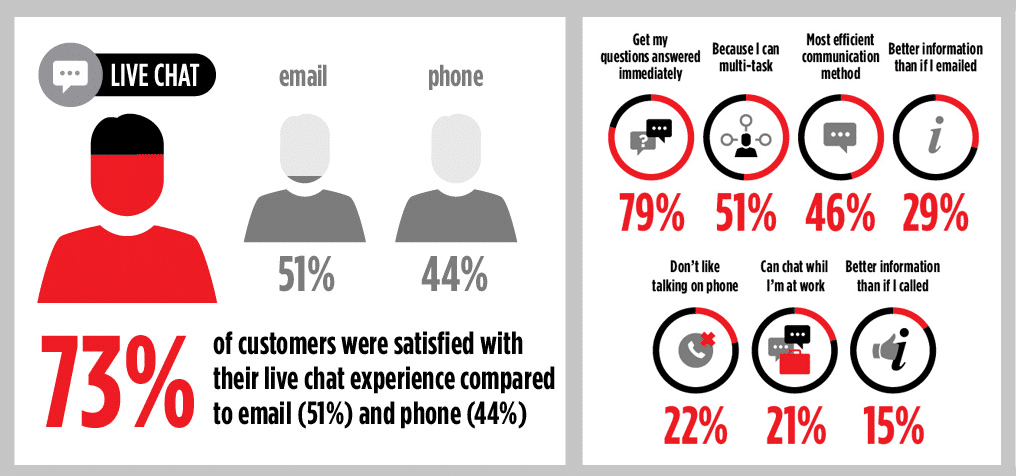
Unfortunately, PayPal isn’t currently beating or even meeting this level of support. Currently, their available support channels include phone support, asking a question in their forum, or via email. Here are their available support channels.
While they do offer a forum in which community members can presumably be available at any time, it’s not the same thing as receiving official support, something they acknowledge in a disclaimer out of the gate when you access the community page. Therefore, information in there should be taken with a grain of salt.
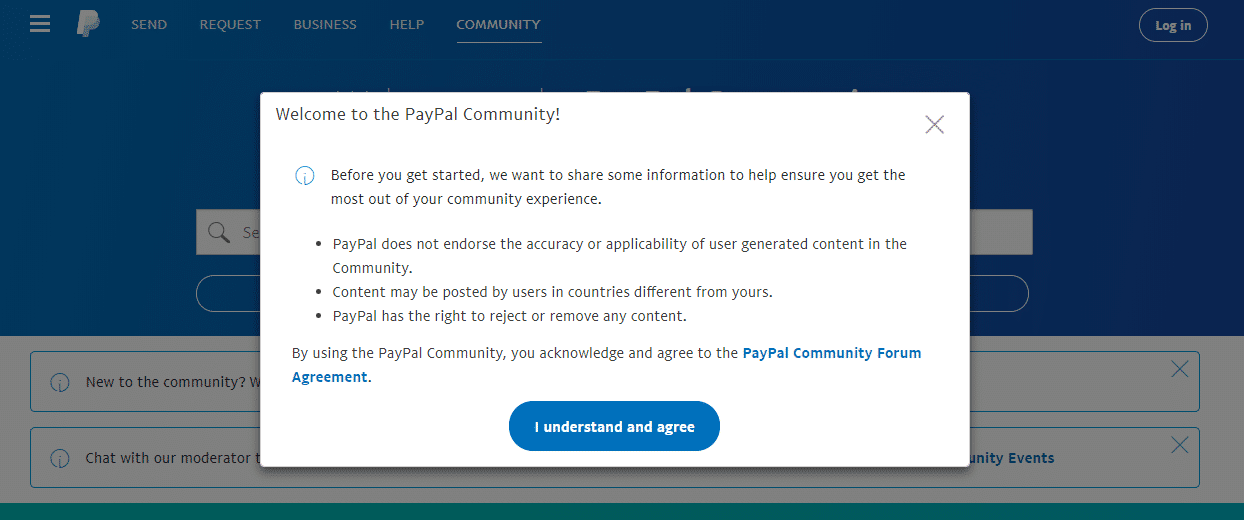
Their phone hours also aren’t comparable to Stripe’s 24/7 support.
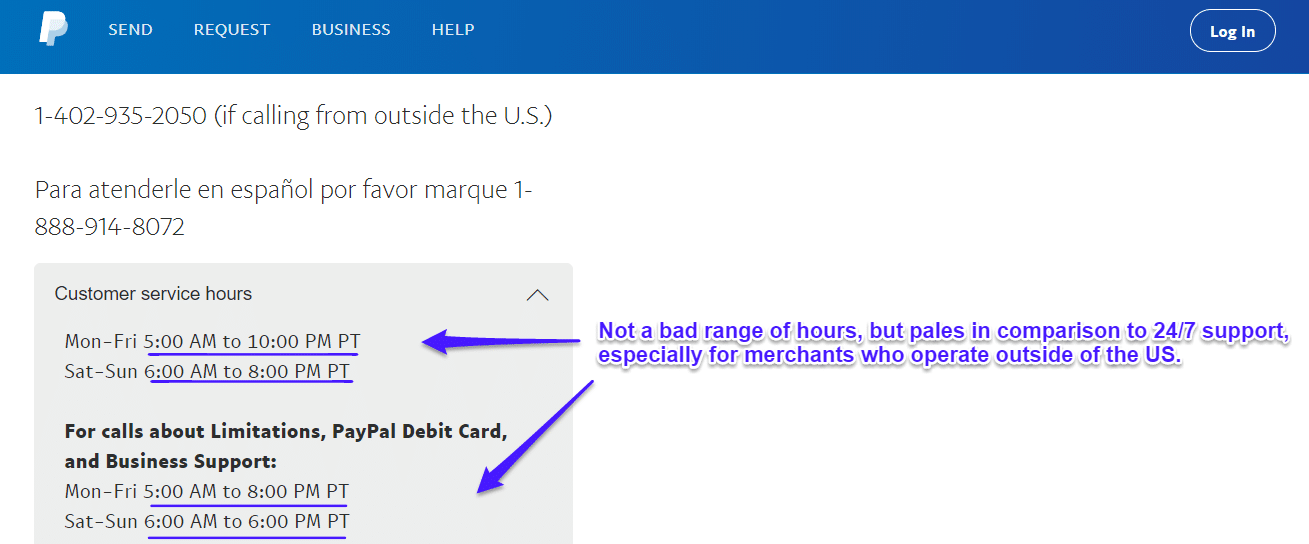
Our victor emerges once more when it comes to customer support.
Winner: Stripe 🏆
Unfortunately, their reign may be in trouble for our next category.
Payment Plans
High-ticket items have an intrinsic problem: they’ve got a much smaller base of customers.
One way to get around that is to use payment plans. Payment plans open the ecommerce gates for customers who want your products but may not be able to absorb the costs in one fell swoop.
Ecommerce jewelry retailer Vrai & Oro demonstrated the power of payment plans when they cut their inventory back, allowed customers to pay in installments, and reached $2,000,000 in annual revenue.
Zulily makes use of these two for their pricier offerings, as well, as you can see for this KitchenAid stand mixer.
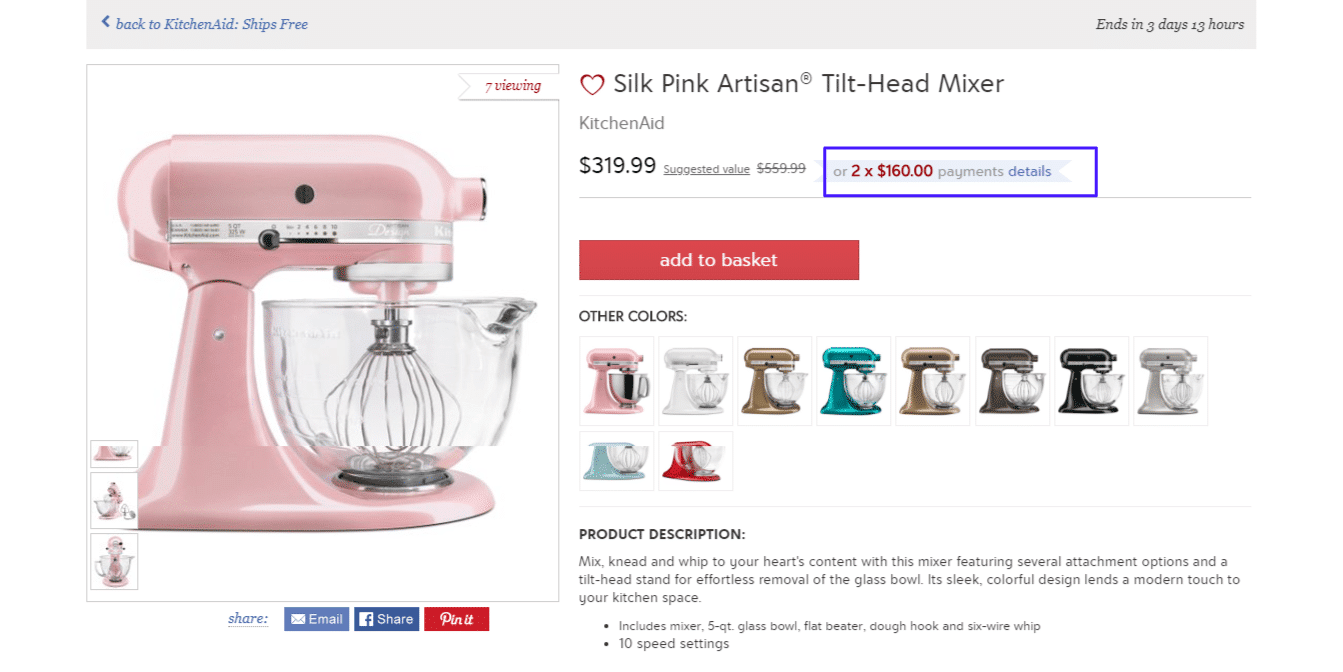
So payment plans are definitely a strength for a merchant with higher-end inventory (or just wanting to move into that kind of inventory). It’s even better if the merchant’s payment gateway makes it easy to set up.
PayPal does this natively with a ton of documentation on developing the checkout process and buttons for setting up an installment plan.
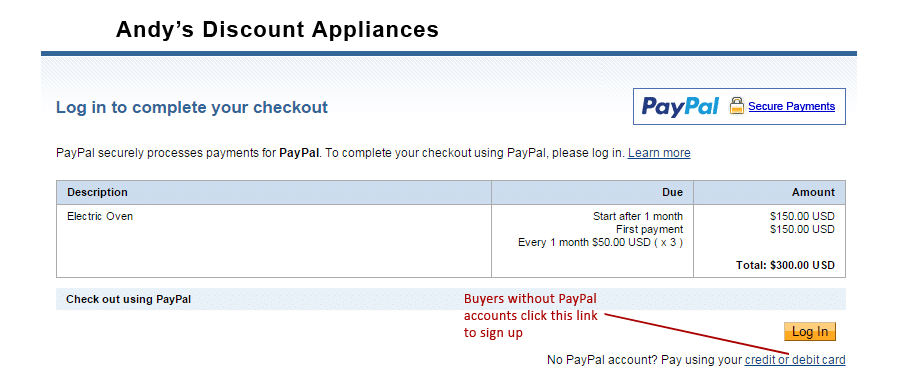
Stripe, however, does not. Setting up a payment plan through Stripe requires a convoluted workaround using their “subscription” system. Workable, but nowhere close to as simple or seamless. You’ll most likely need a developer or a plugin that supports this for it to work properly.
Although Stripe says they’re working on implementing this feature, as of now, they lose this fight by a landslide.
Winner: PayPal 🏆
Speaking of payments, your choice of gateway can significantly limit your customers’ options for paying you. Who offers the least restrictions?
Accepted Payments
Out of the gate, PayPal lets you accept every major credit card, any payment method PayPal users can store (which includes eChecks), and PayPal Credit. It’s that last one that makes this metric a tough one to call.
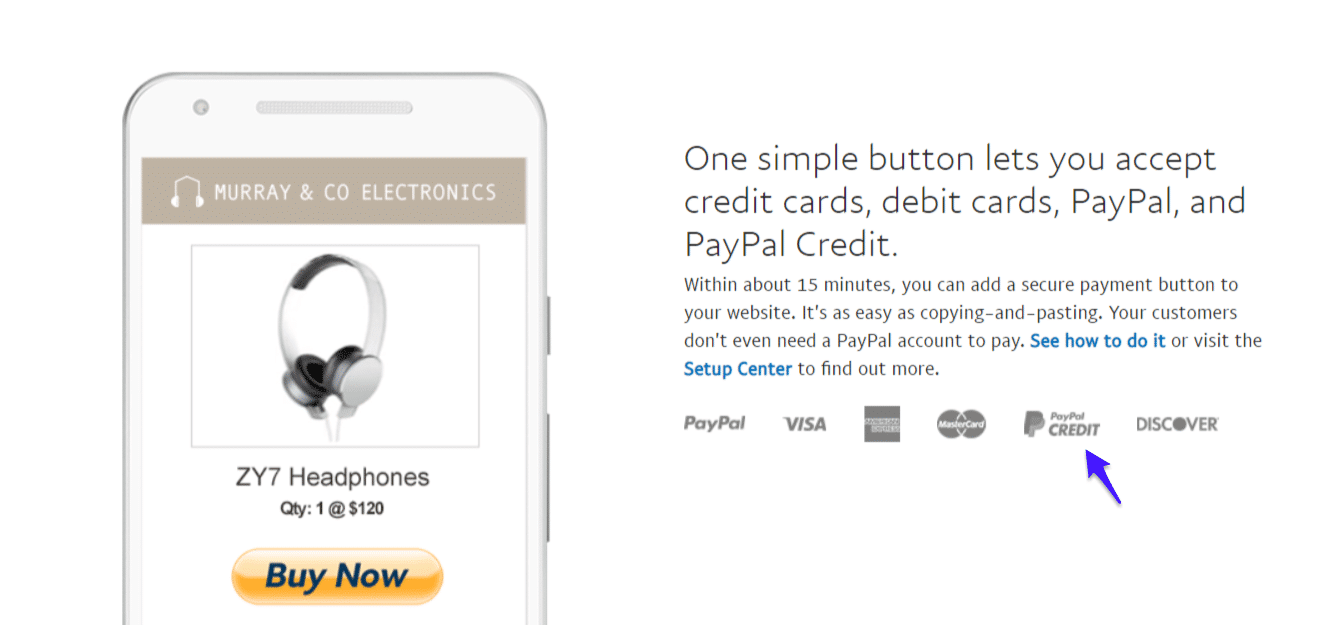
PayPal Credit, a virtual line of credit extended on behalf of Synchrony Bank, is available to anyone in the US with a PayPal account. (Additional stipulations require users to be over the age of 18, but that’s part of PayPal’s core user policies, much to the chagrin of many entrepreneurs.)
PayPal hit the 244,000,000 active registered account mark in Q2 of 2018, so that gives you a lot of potential to reach customers through a line of credit that’s, as you’ve probably guessed, exclusive to PayPal.
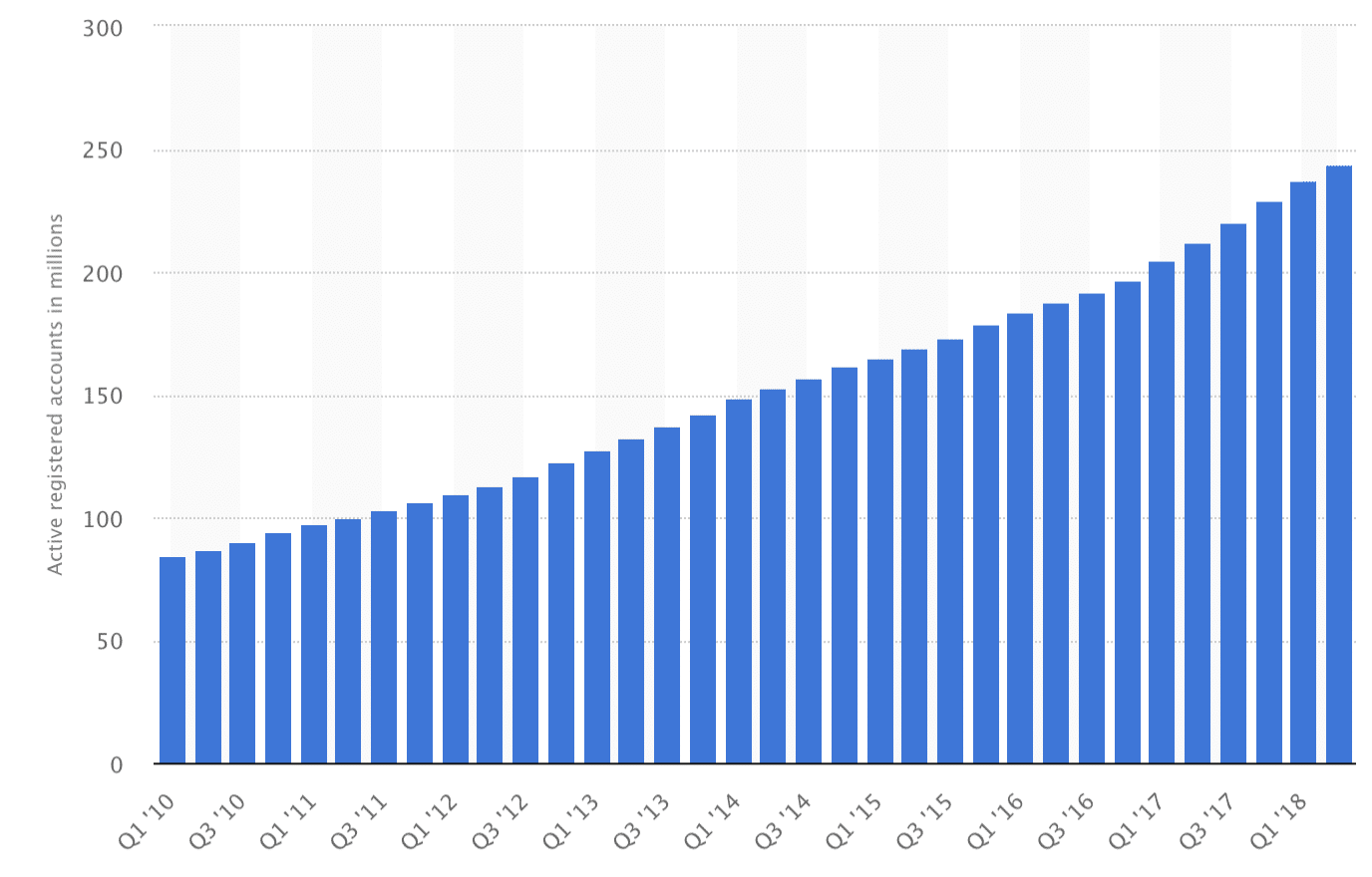
Which is worth bearing in mind when comparing it to Stripe, who accepts far more payment methods. They accept every major debit and credit card along with the following wallets: Alipay, Amex Express Checkout, Apple Pay, Google Pay, Microsoft Pay, Masterpass by Mastercard, Visa Checkout, and WeChat.
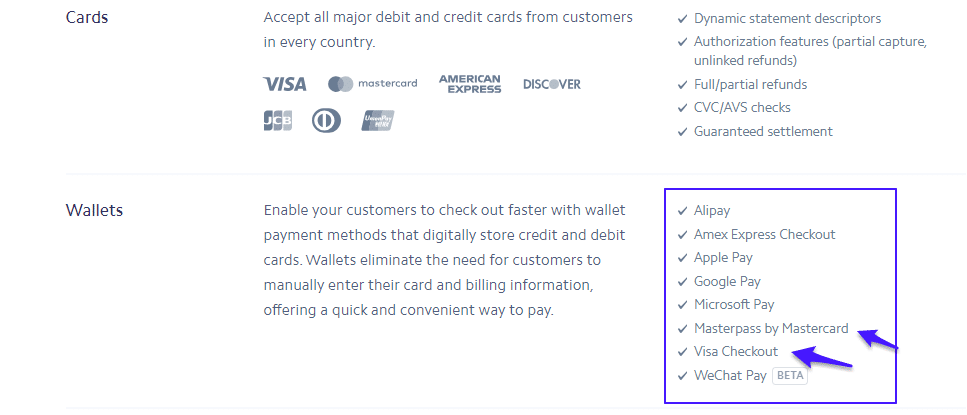
Although all of these wallets (and additional cards) are worth noting, the most standout inclusions are Visa Checkout and MasterPass by Mastercard. Why are these so important? Visa and Mastercard claim a whopping 80.10% of the card network.
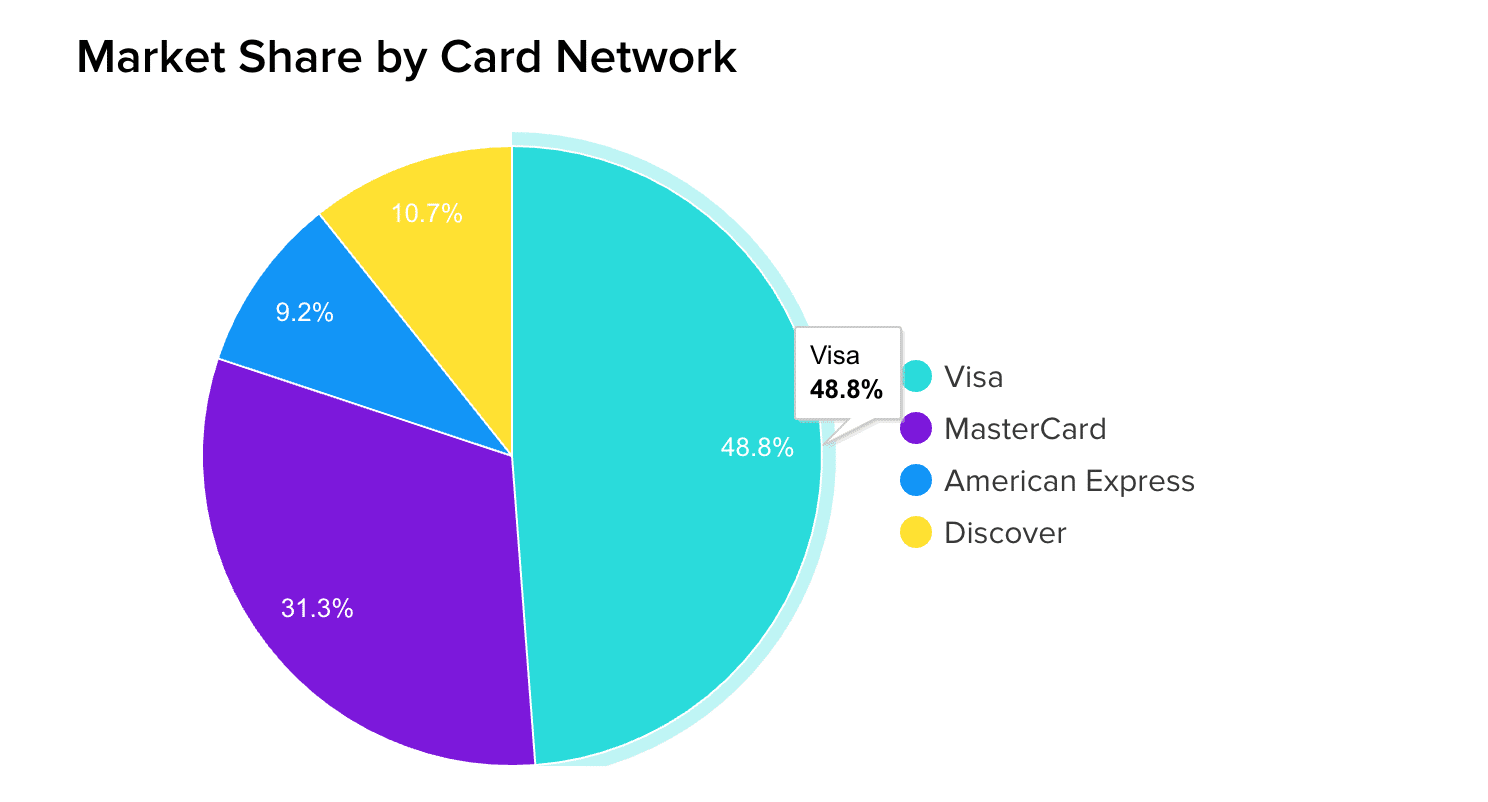
Being able to work with their native wallets is definitely a big boost for an ecommerce store. Case closed, right? Not quite.
Winner: Tie
While Stripe’s inclusion of wallets and extended card networks veers this victory in their favor, PayPal Credit can easily tip the scales in PayPal’s favor if your customer base is primarily in the US.
Checkout Experience
We’re getting near the end of our comparison, but we’ve saved the best two for last.
Your checkout experience directly impacts your user experience and website usability: too much, in fact, not to evaluate it closely.
Stripe’s checkout process is simple. Your customer enters a credit card number, hits submit, and then they’re taken to your thank you or follow up page. The design and flow are in your hands.
PayPal is a little more complicated. Here’s what I mean. Let’s say we want to buy this book from Barnes & Noble. After adding it to our cart, we bounce over to the checkout section.
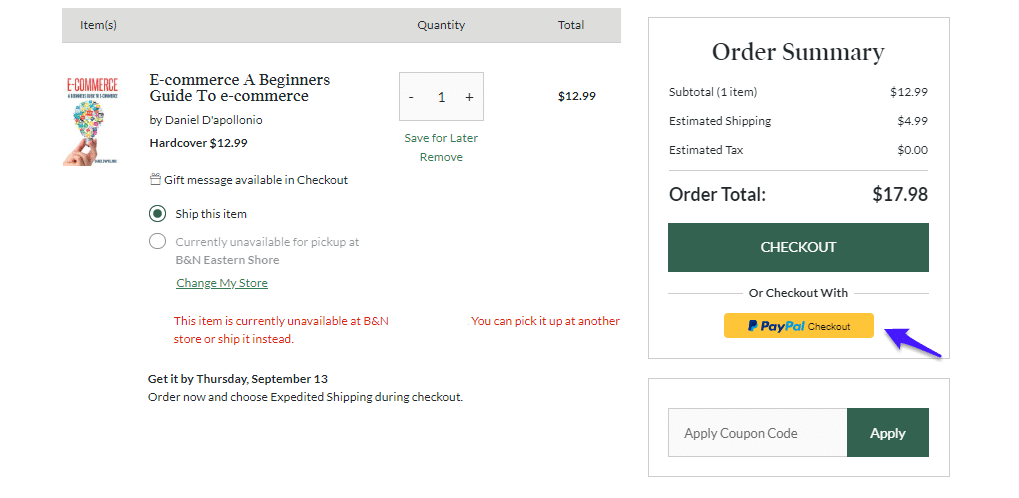
But instead of going through the on-site checkout process, we click the PayPal button. This launches a new lightbox-type popup that we have to wait for before we can log in. I mention waiting because I tried this on a few different major retail sites, and several of them took more than ten seconds to load the new window. Barnes & Noble was by far the fastest.
The potential for additional load times is worth bearing in mind when evaluating the checkout process: users are notably impatient. Simply put, the longer a page takes to load, the higher the bounce rate and or shopping cart abandonment climbs. And, they don’t usually afford you much leeway by browsing other pages in the meantime.
In fact, after a page surpasses the three-second mark, your page views plummet. So the additional load time between pages could end up killing your conversions if it goes on long enough.

But, returning to our process, once it does load, we’re tasked with logging in. You may skip this screen if the user opts to stay logged in permanently.

After that, we have to sort through our payment methods before clicking through again.
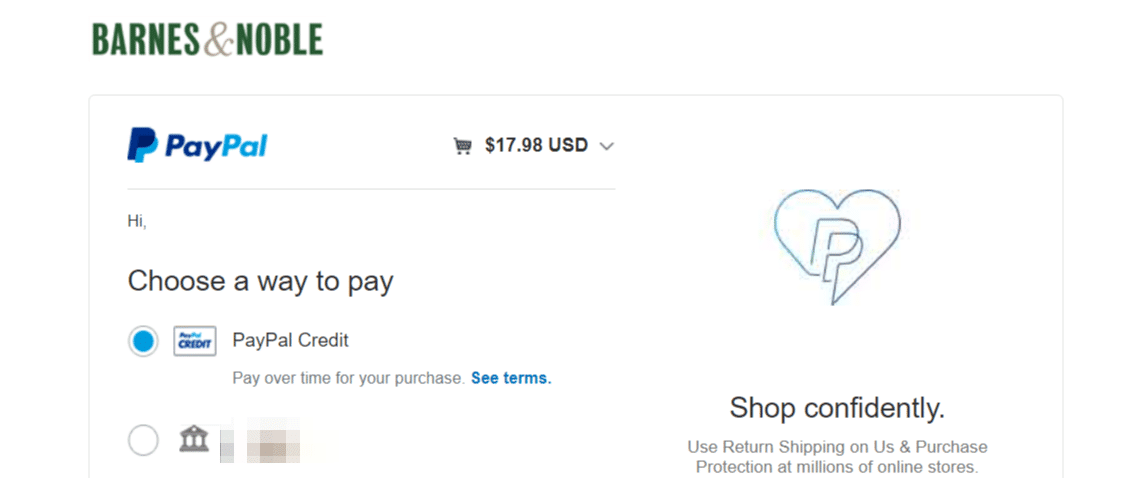
We’re not done after we click the “continue” button, though. Add another click to get through this “Agree & Continue” screen.

Where we end up back at the checkout page, still not done with our order.

All in all, PayPal added five extra clicks to our process while taking us away from the checkout page. However, this can vary based on how you have PayPal configured and what payments you’re accepting. PayPal does offer additional solutions and integrations to accept credit cards right from your own site.
Although these additional steps are admittedly small and may not seem like much, there’s a wealth of scientific evidence that suggests they could be hitting your bottom line.
Known as Hick’s law, research finds that the fewer factors users have to think about when making a decision, the more likely they are to follow through with making said decision. Which means the more steps a customer has to go through, the more likely you are to end up with an abandoned cart.
Over 75% of carts get abandoned across different industries, so anything you can do to save a cart is worth doing — or in this case, worth avoiding.
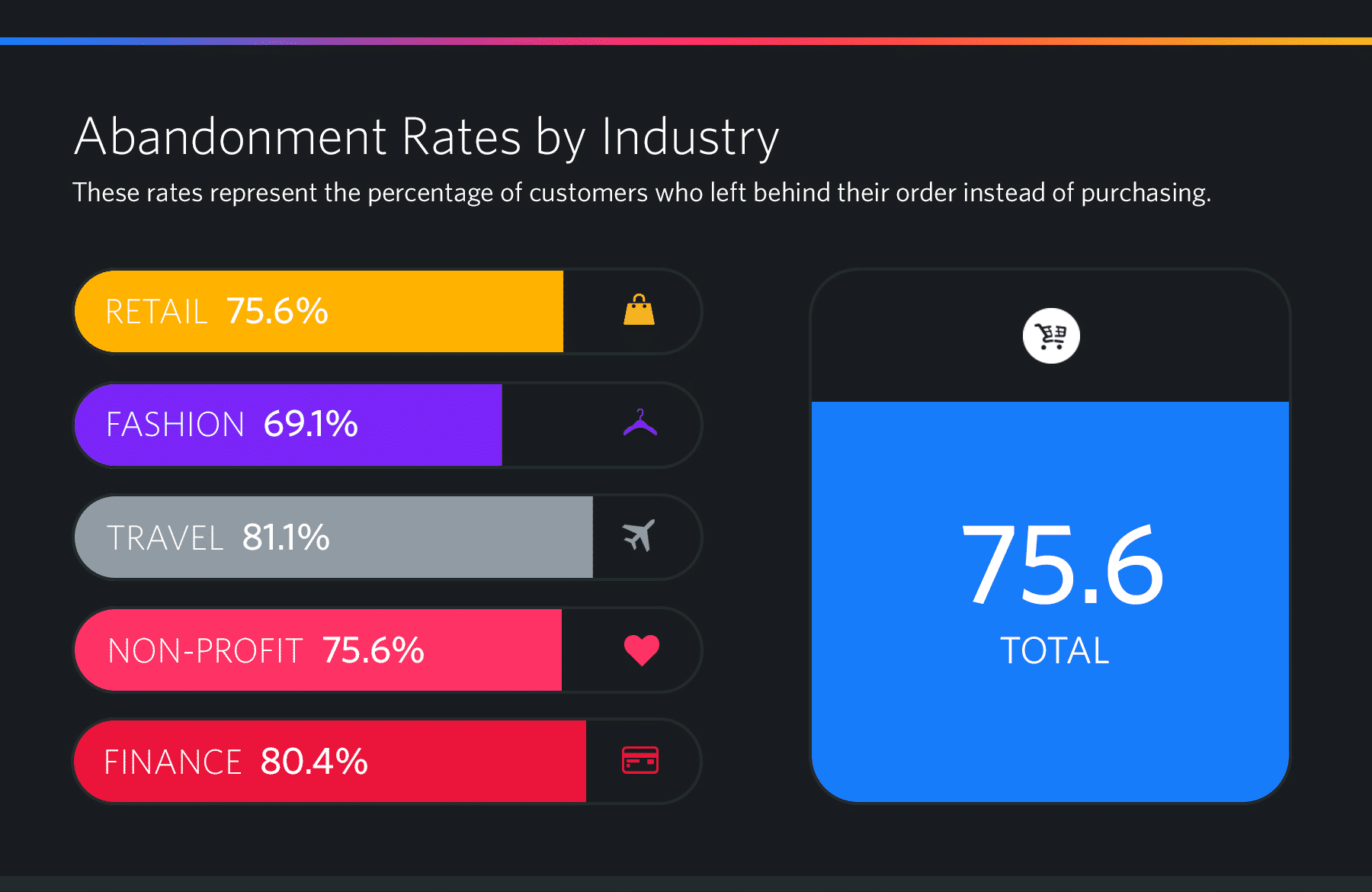
While PayPal does offer checkout solutions on your own site, this varies based on payments you’re accepting and which type of PayPal account you have. Therefore, Stripe has a slight competitive edge here as the Stripe checkout has been seamless and easy since day one.
Winner: Stripe 🏆
OK, there’s one last gauntlet for these two payment gateways to cross, and for a WordPress user, it’s the most important one.
Integrations
WordPress users love a good plugin, and here at Kinsta, we’re no exception to this rule. First and foremost, let’s talk WooCommerce. No matter what payment gateway you go with, you’re covered.
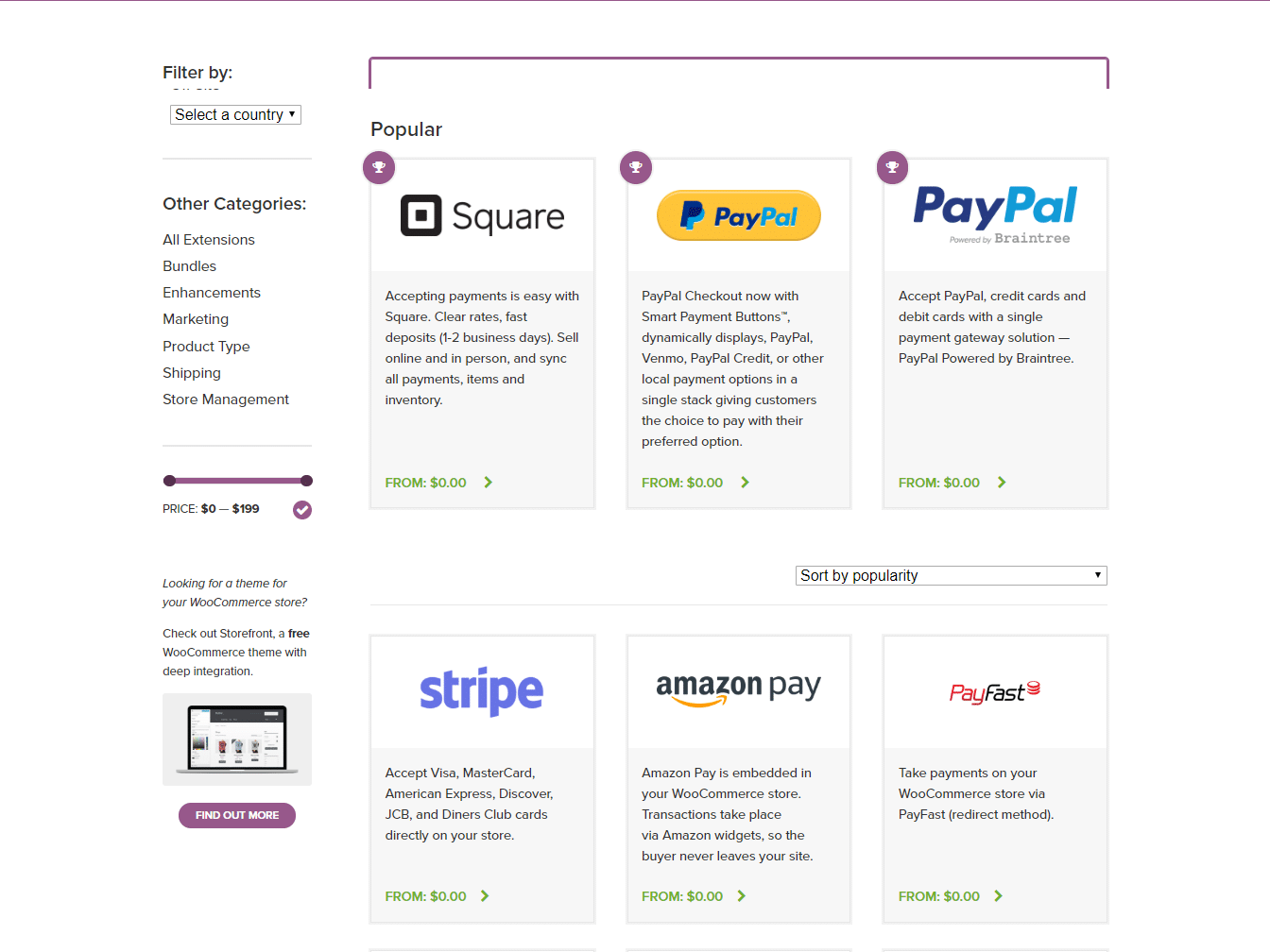
Easy Digital Downloads also has all the popular payment gateway extensions.
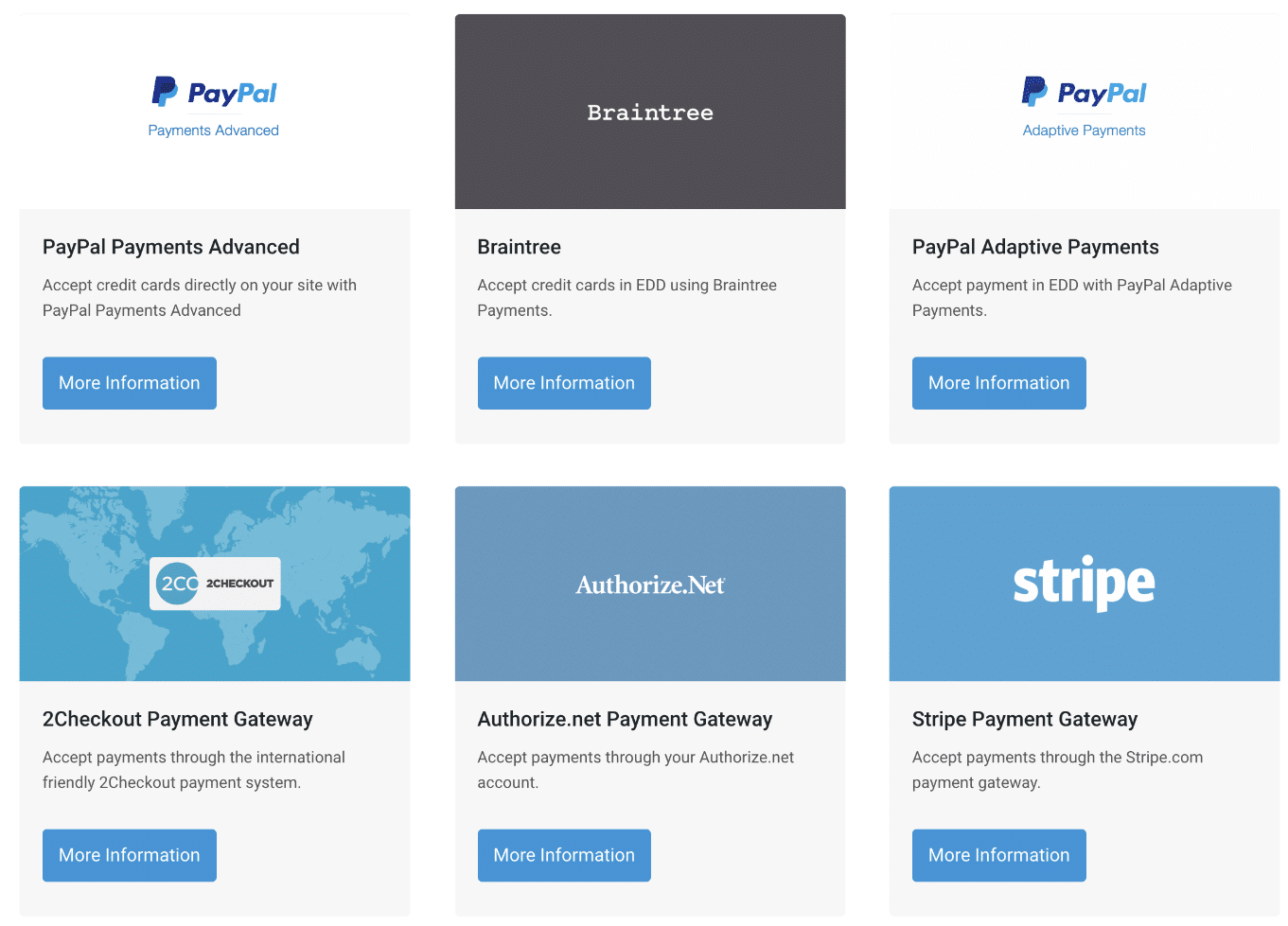
But what about other software types? While your ecommerce software should be your primary concern, CRM software is just as important for a well-oiled business. After all, CRM software can increase conversion rates by 300% and improve productivity by 50%.
So working with CRM? Definitely going to add weight to a payment gateway. One where, unfortunately, PayPal is found wanting.
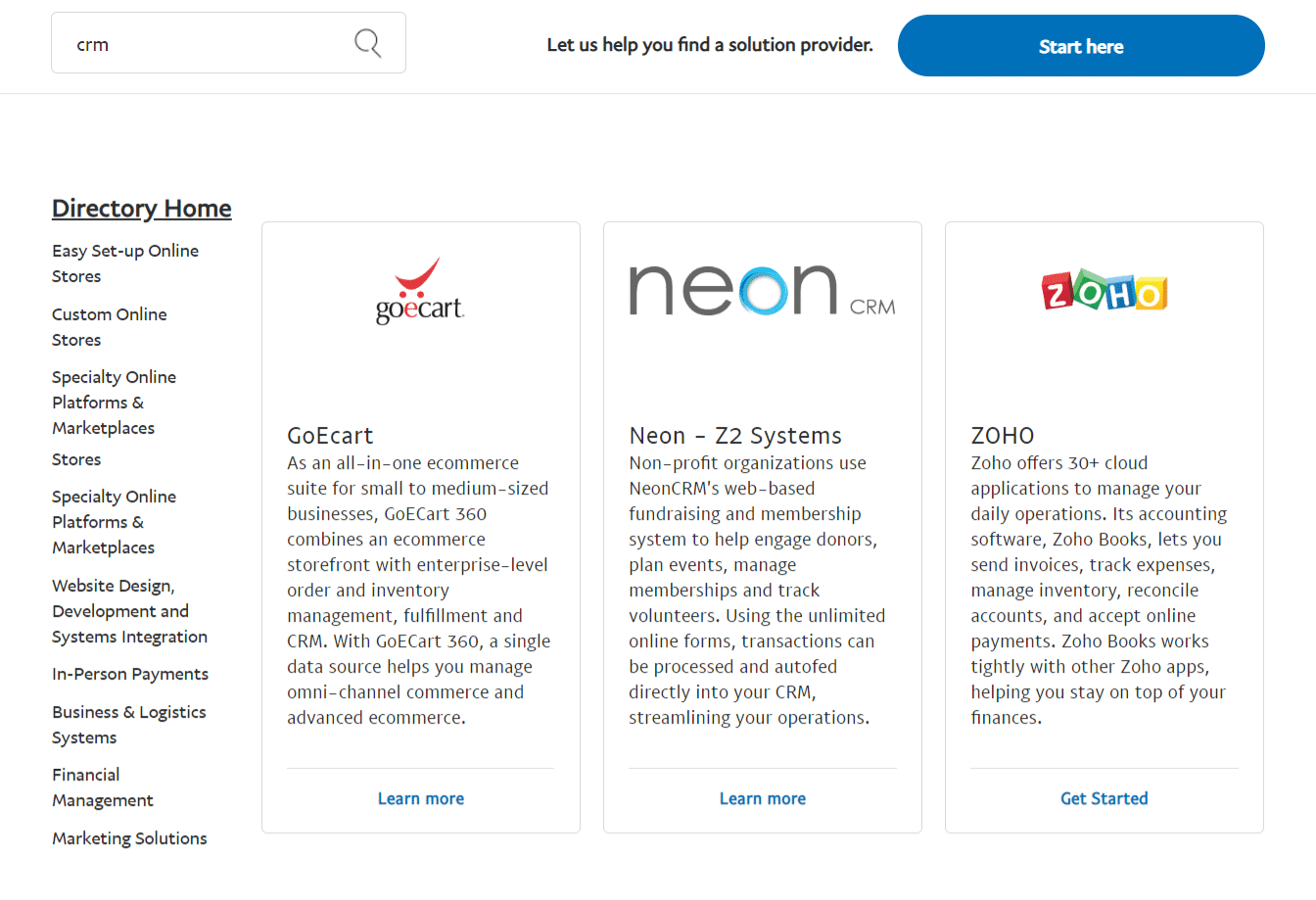
Stripe, on the other hand, shines, featuring partnerships with HubSpot and Agile CRM, both of which frequently make the top five list for the best free CRM suites available.
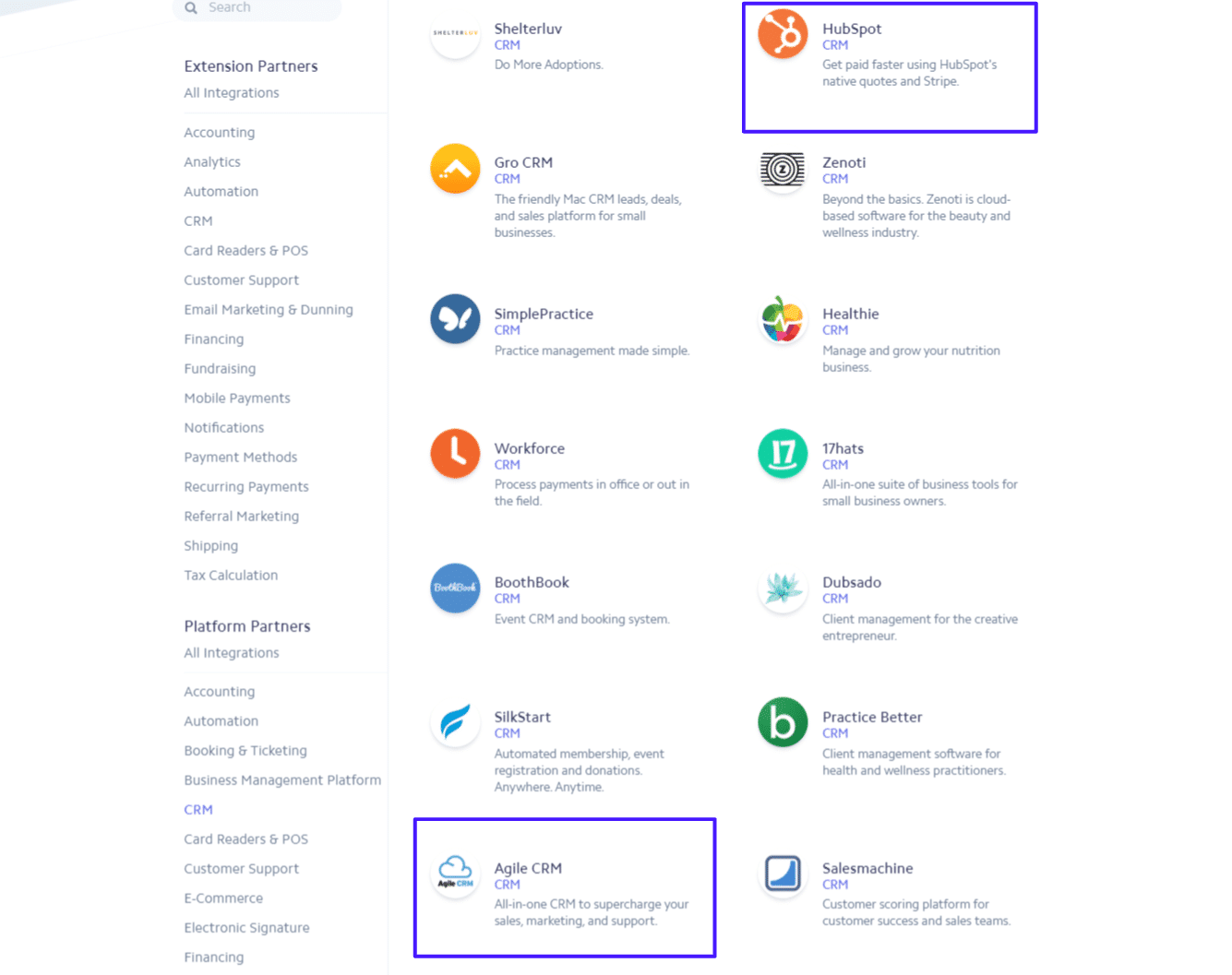
Given their much wider variety of partners — both for WordPress, CRMs, and beyond — we’re led once more to an almost-familiar conclusion for this comparison.
Winner: Stripe 🏆
Now, where does that leave us in the grand scheme of things?
The Final Victor
While both payment gateways offer merchants a lot of opportunities for expansion, Stripe claimed consistently — even if marginally won — victories over PayPal due to its increased user-friendliness in checkout, customer support, simpler fee structure, and integrations.
So if you’re on the fence about which gateway to go with, ask yourself this:
- Do you plan to do a lot of microtransactions (less than $10.00)? If so, go with PayPal.
- Are payment plans a deal breaker for you? In that case, go with PayPal again.
Otherwise, Stripe is the superior choice for ecommerce stores, and it’s super easy to set up on WordPress.
If you happen to be in a country that isn’t supported by Stripe or PayPal (there are some that fall into this category), we recommend looking into 2Checkout.
Summary
Payment gateways are one of the most important decisions you’ll make as an ecommerce owner. While it’s possible to run multiple gateways, it’s not advisable for smaller businesses. Because with twice the gateways comes twice the potential disasters. Although if you can, the more power to you! 🤘
So if you’re on the smaller end of the scale, you have to choose. PayPal and Stripe are the biggest contenders in the market. When it comes to transaction fees, PayPal trumps Stripe for microtransactions, while “average” transactions find the gateways evenly matched. However, Stripe takes the lead for international transactions, which affords them a narrow victory in this metric.
Dispute and chargebacks are a little confusing to navigate between the two, as both PayPal and Stripe use different terms. Stripe, ultimately, emerged victorious due to its simplicity.
Customer support hours were another consideration. Due to its recent inclusion of 24/7 live chat and phone support, Stripe again claimed dominance. This trend continued for accepted payments, checkout experience, and integration.
Overall, due to its overwhelming simplicity and performance on our metrics, we conclude that Stripe is the payment gateway of choice for an ecommerce business.


